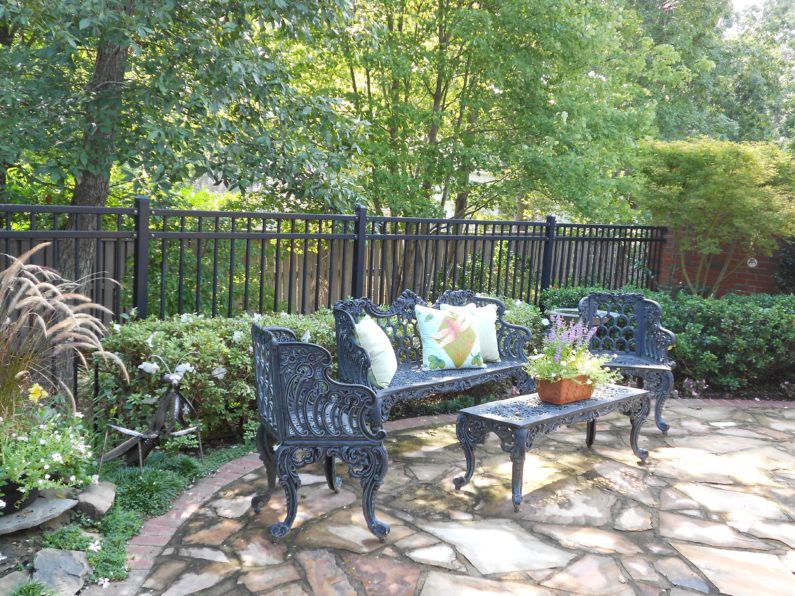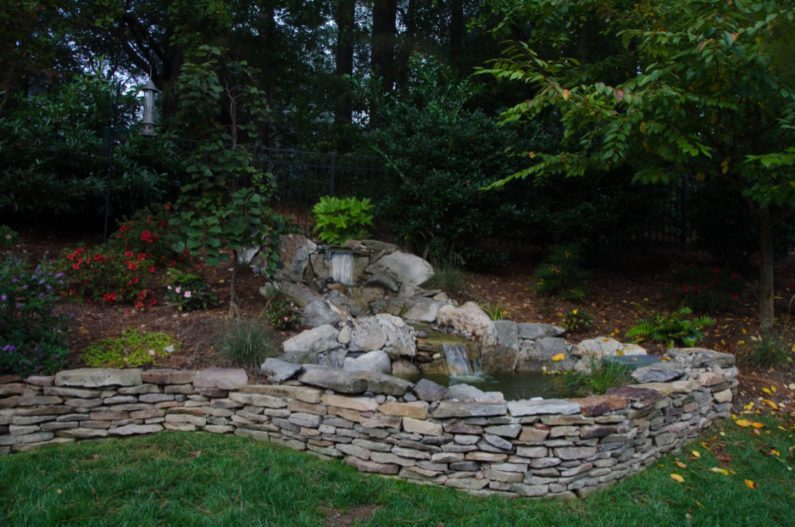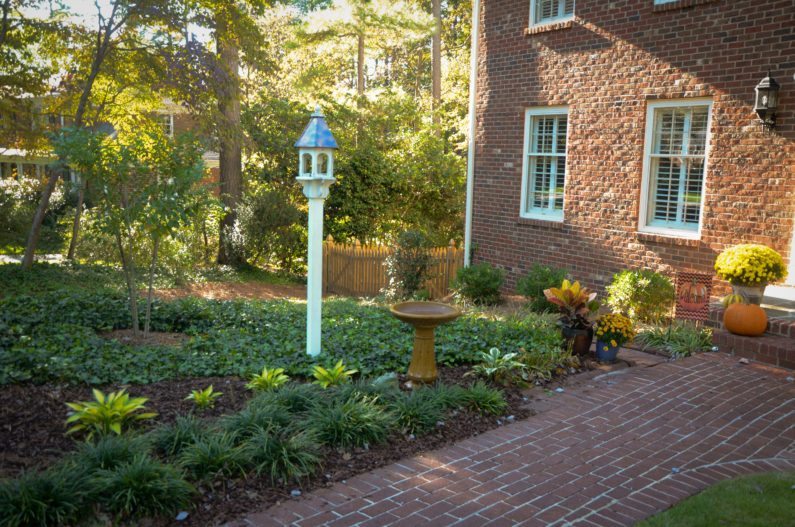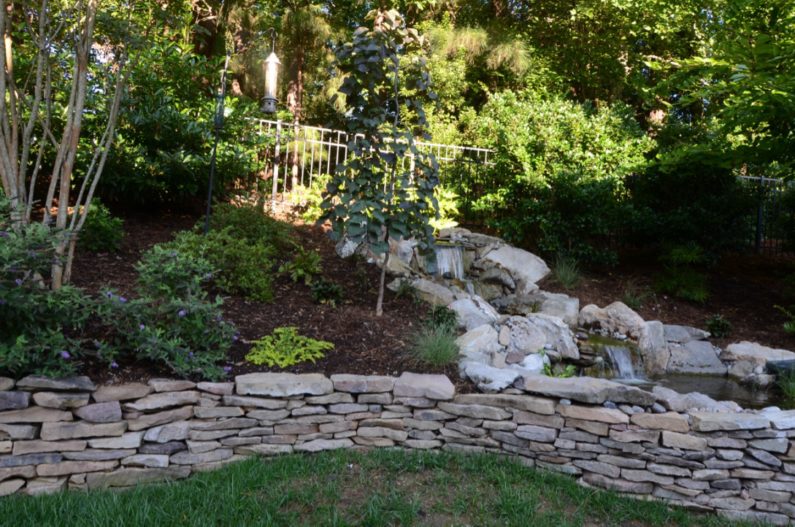
If you want to draw attention to a certain space in the garden or perhaps draw the eye away from an area, establishing a focal point is one way to accomplish this. Focal points can be created using objects or specimen plants that allow the eye to rest on a particular item or area in the landscape. These focal areas or objects can add an element of surprise or invite the visitor in to seek refuge in a space. They also add interest to the garden and can entice the viewer to want to explore what may be behind a curve in the path or to rest at a garden bench. Some objects that do a great job leading the eye are water features, statues, a garden bench, bird feeders, pots, and garden globes and other garden accents.

However, you want to make sure not to overwhelm the space. Too many focal points can make the space appear busy and confusing to the viewer and detract from the experience. Typically, a focal point is simply to define an area or space. Another thing to keep in mind is that an object may be more powerful in attracting the eye than a plant, but a specimen plant still can do the trick. Actually, anything that provides shape or color can serve as a focal point. However, if you do decide to use a plant, then selecting one that provides interest year round is best. That is not to say that using seasonal plants as a focal point such as a perennial grouping or border are a no-no. Seasonal plants are a welcome addition to the landscape. The great thing about it, is that it is all up to you! After all, it’s your garden so it’s really whatever appeals to you.

If you want to create a new landscape design or simply define an existing one, we would love to help!


